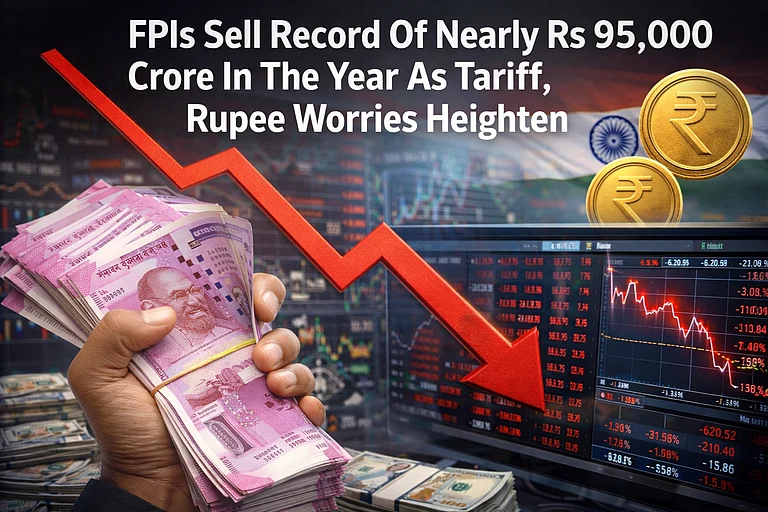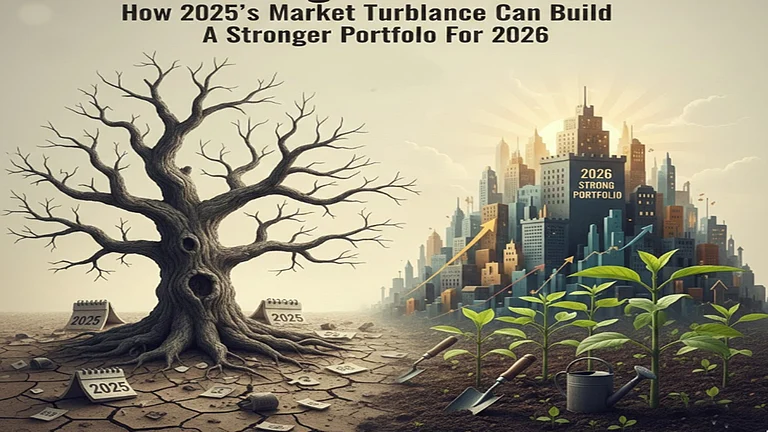Sponsored Content
On a Global landscape, calling 2022 a tumultuous year doesn’t really address the cross-asset pandemonium that we saw. Putting things in perspective, total returns from the most important financial assets, US stocks and bonds have had worst year since 1872. Clearly, Indian financial assets bucked this trend as the macro situation remained healthy (on buoyant domestic economy that partly off stetted global headwinds of Inflation and rate hikes be central banks).
As we crystal gaze 2023, some of global themes are almost consensus viz a. key developed market will face or barely avoid recession b. Inflation Peaks c. Bonds/Cash may outperform & d. Stock market to see flat year after a sharp dip e. EMs may outperform DMs. The overarching messaging from this assessment seems to be that key headwinds of 2022, namely the rising inflation and rates is likely to fade into 2023 and the resilient growth narrative is increasingly likely to be challenged.
This continued tumultuous global macro backdrop lays out interesting phase of Indian Equity fund markets that has remained nonchalant on back of resilient domestic macro & micro. India currently is firing on all cylinders with resilient macro and improving micro (in stark contrast to key developed markets). As per IMF, India GDP growth was one of fastest in 2022 and expected to top charts in 2023 with 6% and has one of the now positive real rates (policy rate – inflation rate) of ~40 bps vs >-300 bps in key developed markets. This is coupled with mid cycle spoils of rising tax collection, rising credit growth and improving capacity utilization (a classic mid cycle play that is already played out in the west). On Corporate side, the classic mid cycle play is visible in corporate profitability metrices of Banking, Cyclicals and Consumption. These sectors continue to do major heavy lifting for EPS growth as they take baton from early cycle commodity plays and global late cycle exposed IT.
Hence are increasing or actively deliberating the India allocation as most of the macro/micro themes seems structural in nature. However, markets have sensed this change of heart for India allocation and run up already (even before material improvement in macro and micro) making some circumspect of the valuations. Current on a trail or forward PE basis, Nifty 50 is at ~21 times and rightfully so as post rebasing in FY22 and surpassing the stagnant earnings seen over FY18- 21 at ~450-500 levels, Nifty earnings are seen growing at ~15% CAGR in FY22-25E (Source: Bloomberg). This is primarily driven by improved asset quality and credit growth revival in the index heavy BFSI space, pick-up in capex activity and consequent execution in capital goods domain, margins & profit recovery in auto, FMCG, metals, pharma and oil & gas space.
Personally, I continue to value the Nifty at 21,500 i.e. 21x P/E on FY24-25E average EPS of 1020 with corresponding Sensex target at 71,600; offering a expected potential upside of ~19%. However, all this is happening in a backdrop of falling inflation and growth that might be headwind for valuations as EPS expansion many get rolled over. Valuation equation can be decomposed into 3 aspects namely premium, earnings growth and relative global PE multiples. While on the earnings growth there are risk to upside from current expectations of 15% EPS growth but on Premium to MSCI EM (currently at 90%+ percentile in premium for India) and on relative global P/E multiple (risk free rate to remain high and equity risk premium to expand) there is limited room for valuation scope improving.
The portfolio implications from this are one should look domestic story and not globally exposed Technology (impending recession fears) and metal sector (usually an early cycle play). As visible in strong Net Interest Margins (NIMs) in Q2 FY22 along with asset Quality issues having ebbed, and sector is seeing credit growth resurging in last five years (because of retail and MSME) With Credit growth picking up to 18% and loan growth to be around 13/14% in FY23/FY24, major banking universe may deliver growth in PAT.
Government is expected to come out full guns blazing in terms of capital expenditure. We expect central government allocation to capex to grow 18% YoY in CY23 led by sectors like railways, defense, housing and roads, thereby exhibiting 23.5%. CAGR in capex allocation over FY19-24E. Activity in broad system wide indicators like projects under planning and tendering/awarding activity are at all-time highs and clearly indicate the resumption of the capex cycle has multifold legs in the offing. For CY23 and beyond, coupled with traditional segment, we expect power T&D, renewables, digital automation, data centers, process industries to see robust capex from state governments, private players and PSUs.
The muted price performance of consumer durable (CD) companies in the last one year was largely due to a sharp decline in the margin profile of companies amid raw material inflationary pressure. Key input costs have now fallen in the range of 20-50% since the start of FY23. This, coupled with structural growth themes like financialization, urbanization and Digitization are expected to drive earnings growth for Indian corporates going ahead.
Disclaimer: This disclaimer informs readers that the views, thoughts, and opinions expressed in the article belong solely to the author, and not necessarily to the author's employer, organization, committee, or other group or individual.
Securities investments are subject to market risks and there is no assurance or guarantee that the objective of the investments will be achieved.













